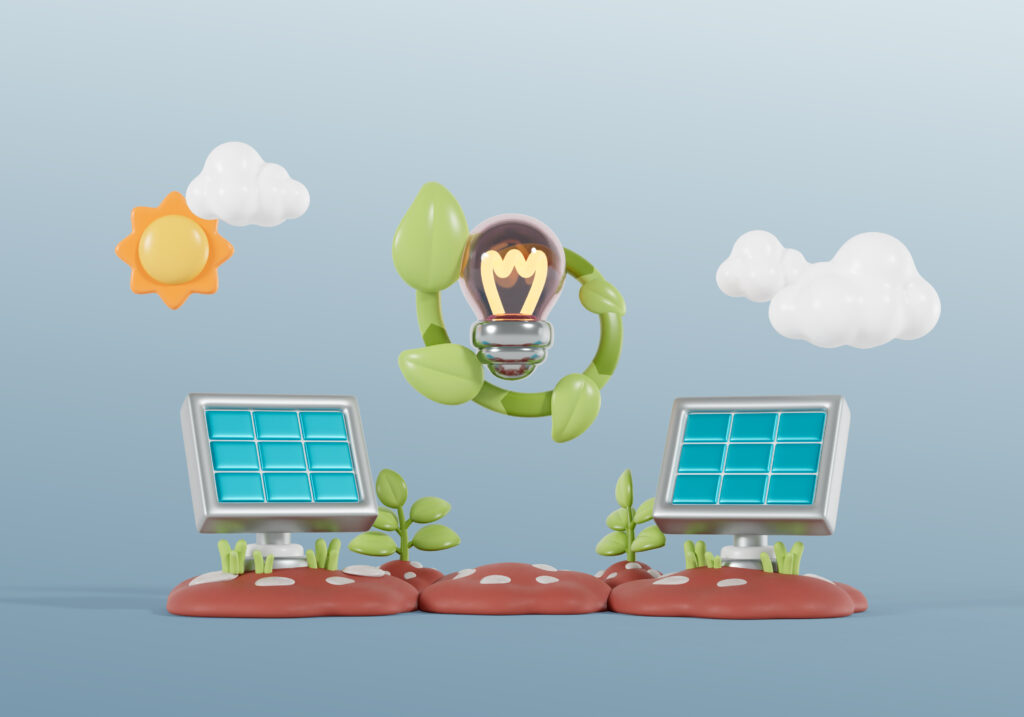In the 21st century, the energy sector is witnessing a paradigm shift towards sustainability, driven by the increasing demand for renewable energy. With the urgency to combat climate change, companies worldwide are transitioning from fossil fuels to renewable energy sources such as wind, solar, and hydropower. However, the variability and unpredictability of these energy sources present significant challenges. This is where Big Data comes into play as a game-changer in renewable energy management.
How Big Data is Revolutionizing Renewable Energy
- Optimizing Energy Production
Big Data analytics enables energy providers to gather vast amounts of data from various sources, including solar panels, wind turbines, and energy grids. This data can be analyzed in real-time to predict energy output based on weather conditions, equipment performance, and demand patterns. For instance, solar energy production depends on sunlight, and cloud cover or seasonal changes can significantly affect it. With Big Data, companies can analyze historical weather data and predict solar output accurately, allowing for better planning and utilization of resources.
- Enhancing Grid Efficiency
Energy grids that rely on renewable sources must balance supply and demand effectively. Big Data helps in real-time grid monitoring, enabling grid operators to anticipate fluctuations in energy supply and adjust distribution accordingly. By leveraging machine learning algorithms, utilities can predict when renewable sources will overproduce or underproduce energy and take proactive steps to maintain grid stability. This not only prevents blackouts but also ensures that surplus energy can be stored or redirected to where it is needed most.
- Predictive Maintenance of Renewable Energy Infrastructure
Wind turbines and solar panels are exposed to harsh environmental conditions, making maintenance a crucial factor in their long-term viability. Big Data can provide insights into the performance and health of these infrastructures by continuously monitoring their operational data. Predictive analytics helps detect early signs of equipment failure, reducing downtime and maintenance costs. By using this data-driven approach, companies can extend the lifespan of their renewable energy assets and maximize their return on investment.
- Energy Demand Forecasting
Big Data is also instrumental in forecasting energy demand. By analyzing consumer behavior, historical usage data, and external factors like economic activity, companies can predict future energy needs. This ensures that renewable energy production is scaled to meet demand without overproducing, which could lead to wastage. Moreover, accurate demand forecasting allows for better integration of renewable energy into existing grids, reducing reliance on fossil fuels.
- Accelerating the Transition to Smart Grids
The future of energy management lies in smart grids, which use advanced digital technologies to optimize the production, distribution, and consumption of electricity. Big Data plays a crucial role in the development of these grids by providing the necessary insights to automate decision-making processes. Smart grids can self-regulate by using Big Data to predict supply-demand fluctuations, identify inefficiencies, and optimize energy flows. This leads to more reliable and resilient energy systems, capable of integrating large-scale renewable energy sources.
The Global Impact of Big Data on Renewable Energy
The integration of Big Data into renewable energy management has far-reaching implications, not only for companies but also for the global effort to reduce carbon emissions. By optimizing energy production, improving grid efficiency, and enabling predictive maintenance, Big Data allows renewable energy to compete with traditional energy sources in terms of reliability and cost-effectiveness. Furthermore, governments and international organizations are increasingly recognizing the importance of data-driven energy management as a critical component of their sustainability strategies.
For instance, the World Economic Forum notes that data-driven technologies are pivotal for achieving global energy transformation goals by 2030. Similarly, a Harvard University study highlights how machine learning and Big Data analytics are enabling the transition to more sustainable energy grids. Additionally, global consultancy firms such as McKinsey emphasize the role of advanced analytics in transforming the renewable energy sector.
Conclusion
The role of Big Data in renewable energy management cannot be overstated. As the world transitions to a low-carbon future, Big Data will be an indispensable tool in overcoming the challenges of renewable energy variability, grid efficiency, and infrastructure maintenance. For IT service companies working in this space, harnessing the power of Big Data to provide innovative solutions will be key to driving the global energy transformation.
References:
- Harvard University: Machine Learning and Big Data Analytics in Renewable Energy Harvard Study.
- World Economic Forum: Data-Driven Technologies in the Global Energy Transformation World Economic Forum Report.
- McKinsey & Company: Advanced Analytics in Renewable Energy Sector McKinsey Insights.
- United Nations: Renewable Energy Management and Big Data Applications UN Energy.





